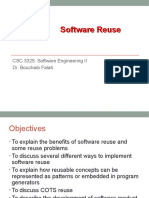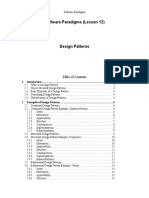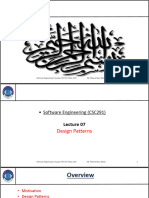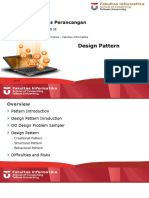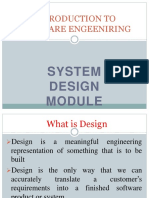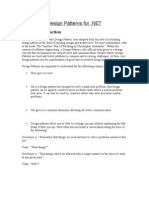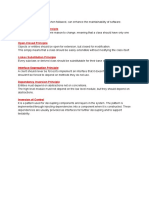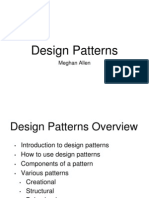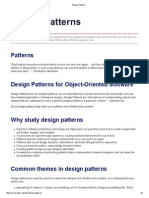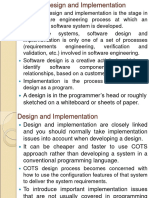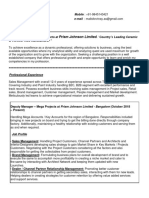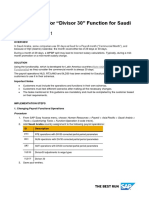0% found this document useful (0 votes)
96 views57 pagesDesign Patterns & Components
This document discusses design patterns and their evolution into software components. It begins by outlining the benefits of design patterns for capturing experienced developers' knowledge and providing a common language. However, patterns are not directly reusable solutions. The document then presents the Observer pattern as a successful example and describes how object-oriented languages like Eiffel have moved from implementing patterns individually to reusable component libraries, improving software design and reuse.
Uploaded by
qaasim asadCopyright
© © All Rights Reserved
We take content rights seriously. If you suspect this is your content, claim it here.
0% found this document useful (0 votes)
96 views57 pagesDesign Patterns & Components
This document discusses design patterns and their evolution into software components. It begins by outlining the benefits of design patterns for capturing experienced developers' knowledge and providing a common language. However, patterns are not directly reusable solutions. The document then presents the Observer pattern as a successful example and describes how object-oriented languages like Eiffel have moved from implementing patterns individually to reusable component libraries, improving software design and reuse.
Uploaded by
qaasim asadCopyright
© © All Rights Reserved
We take content rights seriously. If you suspect this is your content, claim it here.
/ 57














